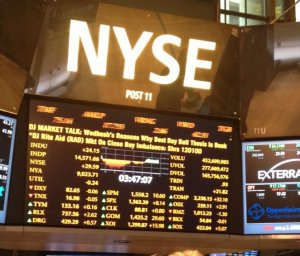Why is Averaging Down a Bad Stock Market Strategy?
 I used to listen to an afternoon investment strategy radio show. People would call in to the show with questions about all sorts of stocks and bonds. The show hosts, who were professional investment fund managers, would give their opinions on whether to buy, hold, or sell the financial securities people described to them. Of course, they always gave such advice with disclaimers but they would explain their reasoning.
I used to listen to an afternoon investment strategy radio show. People would call in to the show with questions about all sorts of stocks and bonds. The show hosts, who were professional investment fund managers, would give their opinions on whether to buy, hold, or sell the financial securities people described to them. Of course, they always gave such advice with disclaimers but they would explain their reasoning.
One piece of advice I heard several times was that if you’re going to invest in stocks you should never buy them when they are on the way down. This is called “Averaging Down”. Some people view it as a way to reduce the average cost per share of a stock they are interested in holding. But the common sense rule of thumb the show hosts always offered was that “you never know if a stock will continue going down” after it hits its 52-week trading range bottom.
Stock prices fluctuate all the time. They usually settle into a so-called “trading range” where they move up and down within certain boundaries. It normally takes some exceptional event for the stock to move outside of that range. Maybe a rival company reaches a breakthrough, thus pulling its industry up; maybe a major player in that industry goes bankrupt, thus dragging the whole sector down as investors worry about whether other companies can survive the shock. There are a lot of reasons why a stock price may break out of its trading range, but it can go down just as it can go up.
So if uncertainty in the stock’s ability to stay above its most recent trading floor is the best reason NOT to average down, is there ever any good reason TO average down? I’m not a professional stock analyst but I think there is one scenario where this makes sense for the average investor. So I am not talking about shorting the market (where you sell shares first and then buy them at a lower price).
If you stop to think about it, there is one type of mutual fund that is virtually guaranteed to always recover its value: that is a major index fund that follows the Nasdaq Composite Index, the Dow Jones Industrial Average, or the Standard and Poor 500. These index funds basically follow the market, trading into and out of the stocks that are covered by the major indexes. So while the funds’ share prices decline as the market declines, you don’t have to worry about an underlying company stock taking a nose-dive.
Hence, if you set up a Dividend Reinvestment Plan (called a DRIP) where you just put your investment money into an index fund, it won’t hurt you if you buy shares as the fund’s share price goes down. When the market recovers that index fund will recover its share price, too. And so you can, in fact, average down safely with an index fund. And that is a point I made at the end of “When is the Best Time to Enter the Stock Market?”. But this article explains why it’s okay to do that.
As someone who doesn’t make a living managing stock portfolios I would never advise you to average down on any given stock. I am sure there are traders who do this and make a lot of money, but it’s a very risky strategy and you really have to know what you are doing.


